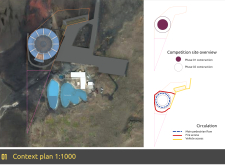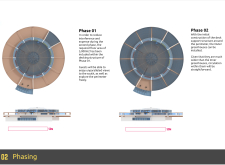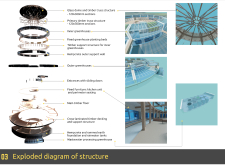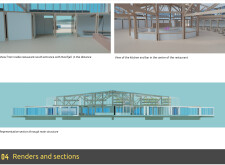5 key facts about this project
The architecture reflects a commitment to sustainability through careful material selection and phased implementation. The design proposes a circular primary structure that allows for expansive window views and natural lighting, reinforcing the connection to the exterior environment.
Unique Features and Design Approaches
One distinctive aspect of this project is its focused integration of the natural landscape. The use of significant glazing provides occupants with constant visual access to the environment, bringing elements of nature into the built space. The central area, designed as a communal hub, encourages social interaction among users, fostering a sense of community.
The project employs a variety of materials that emphasize sustainability. Glass domes allow for passive solar gain while reducing energy consumption. The structure utilizes timber elements, including cross-laminated timber for decking and a timber truss system for structural integrity. Hemcrete provides moisture regulation and insulation, contributing to the overall sustainability of the design. Additionally, rainwater collection systems are incorporated to enhance water efficiency.
Functions and Spatial Organization
The design's spatial organization is divided into two phases, allowing gradual development while minimizing disruption. The initial phase focuses on establishing the primary structure and essential operational components. The second phase introduces additional features such as greenhouses, expanding functionality for botanical cultivation.
Circulation paths have been designed to optimize movement throughout the space, ensuring accessibility and safety. Emergency access routes are clearly defined, underscoring the project’s commitment to user safety.
To explore this architectural project further, consider reviewing detailed architectural plans, architectural sections, and architectural designs. Each of these elements provides insights into the design process and the innovative architectural ideas that define this project.


























